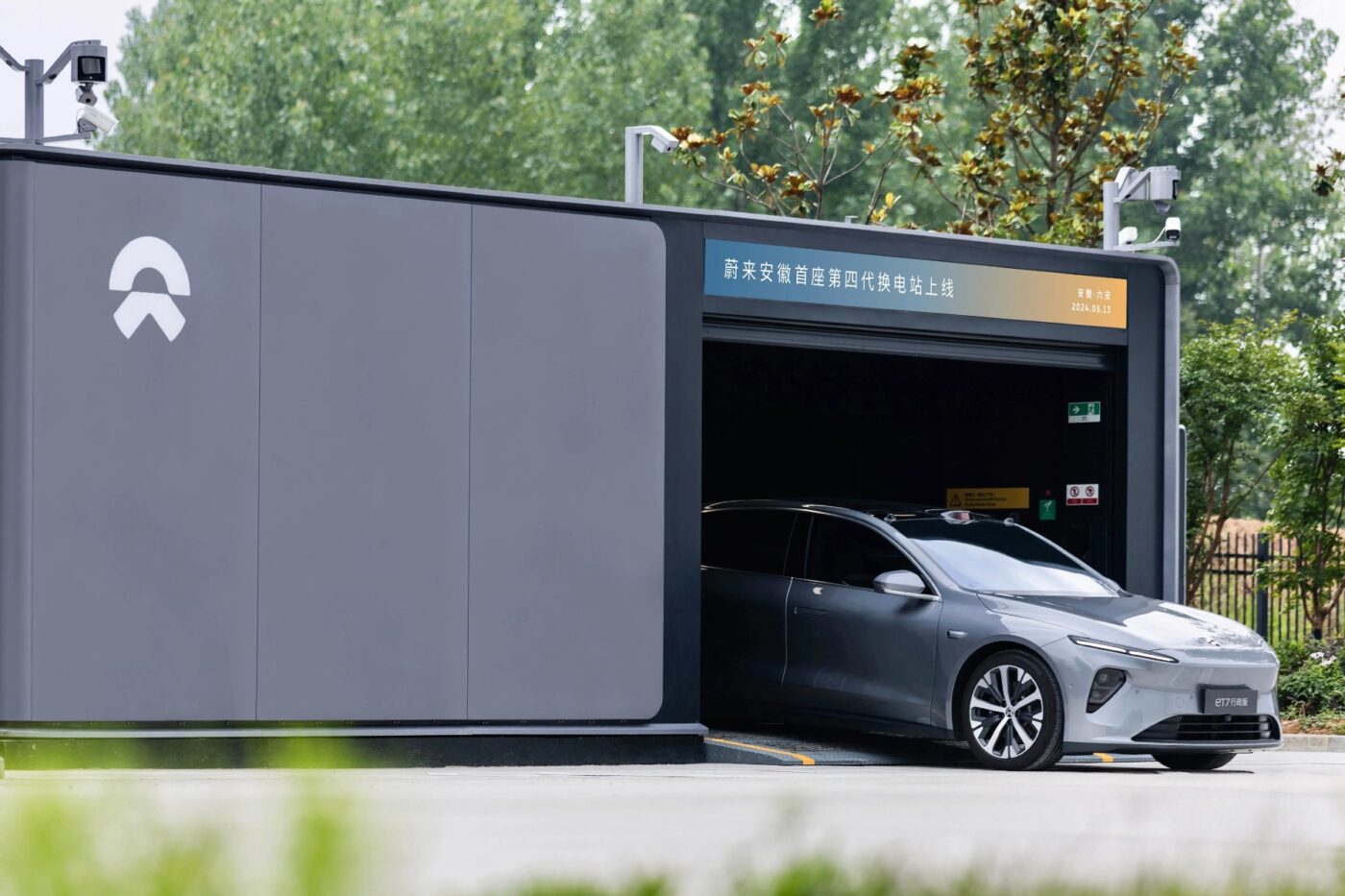Nio launches improved battery swap station in China
At not even quite 2.5 minutes, the swapping process in the new ‘Power Swap Station 4.0’ is more than twice as fast as the previous generation—at least on paper. In our tests, we never quite managed the five minutes often cited as a reference for the third generation—it was usually closer to 6:30 to 7 minutes.
The faster battery change is not the only improvement Nio introduced in the fourth generation. With the enlarged compartment for 23 batteries, each station can carry out up to 480 changes per day. The third-generation stations hold around a dozen batteries. In addition, the ‘Power Swap Stations 4.0’ are equipped with six ultrawide FOV LiDARs and four Orin X chips as standard, which achieve a total computing power of 1,016 TOPS (Tera Operations per Second).
It sounds abstract, but it results in a noticeable improvement for customers: “Users can start an automatic battery swap with just one tap on the centre display, or even without being in the car,” writes Nio. Previously, you had to remain seated in the vehicle and could not leave it during the change process. However, Nio does not mention whether the fourth-generation stations are still manned. At present, each station is still supervised by an on-site employee who monitors the battery changes and can intervene. As a result, the exchange stations in Europe are still tied to opening hours – without an employee present, there is no battery exchange in the middle of the night.
The first new stations were installed in the Liwan district of Guangzhou and the Luoji service area on the G40 Shanghai-Shaanxi motorway – it is also the 108th station in Guangzhou. The density of power swap stations is much higher in Chinese metropolises. According to Nio, the new station in Guangzhou is another first: it is the first station that the company and Zhongan Energy have built together since signing the strategic partnership agreement on 22 March.
Further “All in One” stations will follow from the cooperation in Anhui province, combining power swap stations and charging points with local energy generation from PV systems. Together with the new battery swap station, the liquid-cooled 640 kW charger, which has a maximum current of 765 amps and a voltage of 1,000 volts, was launched on the market. A special feature is the liquid-cooled cable developed by Nio, which, despite its technology and power, will be just 2.4 kilograms – making it easy to operate with one hand.





2 Comments